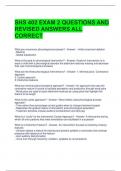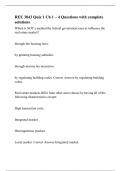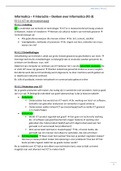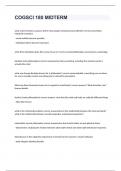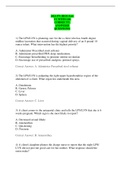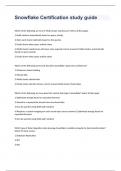Exam (elaborations)
SHS 402 EXAM 2 QUESTIONS AND REVISED ANSWERS ALL CORRECT
- Course
- Institution
SHS 402 EXAM 2 QUESTIONS AND REVISED ANSWERS ALL CORRECT What are uncommon phonological processes? - Answer- - Initial consonant deletion - Backing - Glottal substitution What is the goal for phonological intervention? - Answer- Goals for intervention is to teach a child with a phonologi...
[Show more]
